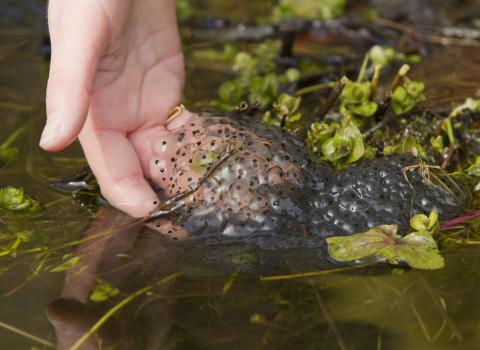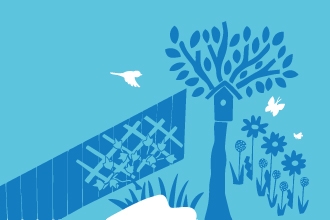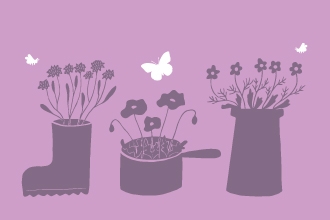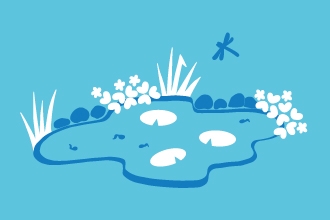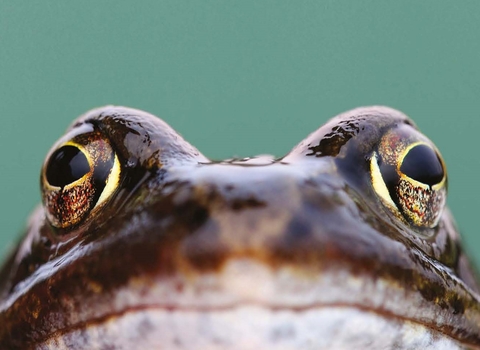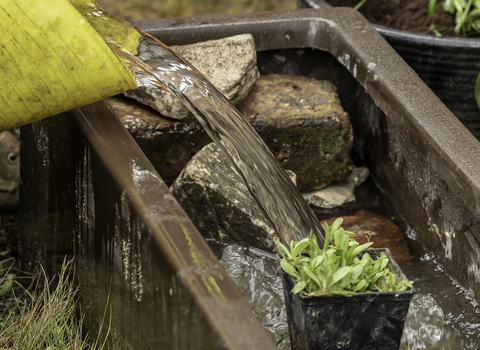Build a pond to attract wildlife to your garden
A wildlife pond is one of the single best features for attracting new wildlife to your garden and it is thought that some amphibians, such as frogs, are now more common in garden ponds than in the countryside. You can build a pond any time during the year, but spring is best.
Designing your pond
A well designed wildlife pond is great for nature, as well as being an attractive garden feature.
It's better for wildlife if you put the pond in a warm area away from overhanging tress. Tadpoles, dragon flies and plants with thrive in these conditions, and the pond will also provide an important water source for visiting mammals such as hedgehogs.
You will need...
- Pond liner - we would recommend a liner made of butyl rubber, which is durable, flexible, moderately cheap and easy to work with
- Spade
- Insulation - Sand, old carpet or newspapers
- Spirit level
- Scissors
Step by step
- Mark out your pond on the ground with a rope or hosepipe first
- Get digging! Dig the hole, ensuring the sides are level with a spirit level on a plank spanning the pond
- Dig an extra 25cm depth to accommodate the liner ’under-cushion’ (see below) and height of the flagstones at the pond edge
- Finally, dig a trench around the perimeter of the pond for the overhanging pond liner to drop into
- Remove any sharp stones or other objects from the bottom of the hole and first put down a 5cm+ layer of sand, old carpet or newspapers (or try loft insulation material!)
- Unroll the butyl liner over the top with the over hanging edges falling into the trench. Any extra excess liner can be snipped off with scissors
- You will need to add a substrate for plants and animals. Sand is excellent because it is sterile and will not harbour any undesirable seeds or microbes. Spread a thin layer over the bottom of the pond
Filling your pond
- Fill with water! If possible, use collected rainwater to fill your pond; for most people however, filling from the tap with a hose is usually the most practical method. To stop the sand substrate dispersing, rest the nozzle on a plastic bag to absorb some of the energy
- Filling may take much longer than you think so now is the time to put the kettle on for a well deserved cup of tea
- Back fill the trench with soil; as the pond fills up, the liner will stretch. As the pond is filling, place turf, soil or flagstones over the exposed liner at the pond edges. Butyl liner degrades in sunlight so try not to leave areas of uncovered liner exposed for too long
- Place stones and logs around the edges to create some habitats for all those future pond visiting creatures. Irregular shaped rocks in the pond will also help create nooks and crannies for pond-life
Remember, NEVER introduce frogs, tadpoles or spawn from another pond, as this could spread disease.
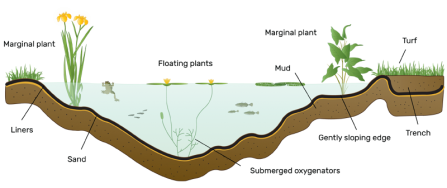
Planting your pond
Plants can be introduced to your pond approximately 1-2 weeks after the initial filling with water, allowing tap water nutrients such as chlorine and fluoride to evaporate and soil to settle.
Make sure to include oxygenating plants so you don't require a pump, which will suck in and destroy all the smaller creatures.
If plants are well chosen and the pond is kept in a relatively balanced ecological state, it shouldn’t need very much maintenance at all. However, do keep an eye out for a build up of dead organic matter and encroaching vegetation.
Oxygenating submerged plants
- Curled pondweed Potamogeton crispus
- Water starwort Callitriche stagnalis
- Rigid hornwort Ceratophyllum demersum
- Water milfoil Myriophyllum spicatum
- Water crowfoot Ranunculus aquatilis
Floating leaved plants
-
Broad-leaved pondweed Potamogeton natans
-
Frogbit Hydrocharis morsus-ranae
-
Floating sweet-grass Glyceria fluitans
-
Yellow water-lily Nuphar lutea
-
Fringed water-lily Nymphoides peltata
-
Water soldier Stratiotes aloides
-
White water-lily Nymphaea alba
Shallow water emergent plants
- Amphibious bistort Persicaria amphibia
-
Water forget-me-not Myosotis scorpioides
-
Lesser spearwort Ranunculus flammula
-
Spearwort Ranunculus lingua
-
Arrowhead Sagittaria sagittifolia
-
Brooklime Veronica beccabunga
-
Bogbean Menyanthes trifoliatea
Tall emergent plants
- Flowering rush Butomus umbellatus
- Branched bur-reed Sparganium erectum
- Water mint Mentha aquatica
- Water plantain Alisma plantago-aquatica
- Greater pond-sedge Carex riparia
- Lesser bulrush Typha angustifolia
- Common reed Phragmites australis
Marginal and bog plants
- Bugle Ajuga repens
-
Marsh marigold Caltha palustris
-
Hard rush Juncus inflexus
-
Lady’s smock Cardamine pratensis
-
Yellow flag Iris pseudacorus
-
Ragged-robin Lychnis flos-cuculi
-
Purple-loosestrife Lythrum salicaria
-
Yellow loosestrife Lysimachia vulgaris
-
Marsh woundwort Stachys palustris
-
Great willowherb Epilobium hirsutum
Invasive plants to avoid
- New Zealand pygmyweed
- Water fern
- Parrot’s-feather
- Canadian / Nuttal’s waterweed
- Floating pennywort
- Curly waterweed
- Water primrose
- Water hyacinth
- Water lettuce
- Himalayan balsam
Wildlife Habitats
Habitats in and around the edge of the pond will be of great benefit to wildlife. Take a look below at how you can optimise your pond to create habitats for different species.
Frogs and toads
A pond is the perfect habitat for frogs and toads, but during the winter they hibernate to escape the freezing temperatures of the water.
To help provide a year round habitat for frogs and toads in your garden, simply lay a plant pot horizontally on the ground by the pond, and bury the lower half in the soil to create a cave! Alternatively, turn the plant pot upside-down and rest on a circle of rocks to raise it, then remove a couple of the rocks to provide an entrance.
Newts
Newts love hiding at the bottom of the pond and finding places to hide. When building your pond, put some irregular shaped rocks at the bottom of the pond and stack around the edges to provide a habitat for newts.
Stacks of logs and stones around the pond will also help to provide much needed hibernation spots for newts.
Dragonflies
Dragonflies spend the majority of their life span underwater in their larval form, therefore ponds are an essential dragonfly habitat. The developing larvae need submerged plants to cling on to and as a source of oxygen.
Logs and stones on a sunny open bank around the pond will also provide a perch for adult dragonflies.
Floating plants in the pond are the perfect site for laying eggs, and vegetation around the pond will provide shelter.
Hedgehogs
Ponds aren't just beneficial to amphibians, they're an important water source for mammals too.
Why not create a beach or ramp to your pond so thirsty hedgehogs can drink without getting trapped.
Honey bees
The water provided by pond can also attract insects including honey bees. Honey bees collect the water and use it to cool the hive as well as to thin honey to be fed to larva.
Floating leaved plants such as frogbit and water-lilies are favourable to bees as they provide a platform on which the bee can easily forage water.
More actions for wildlife
There's lots of small things you can do in your garden, courtyard of windowsill that will benefit wildlife. Take a look at some simple ideas below to see how you can take action for wildlife.
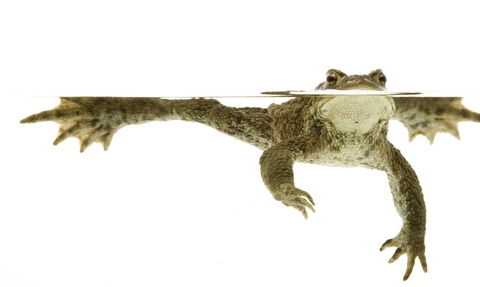
Niall Benvie/2020VISION

